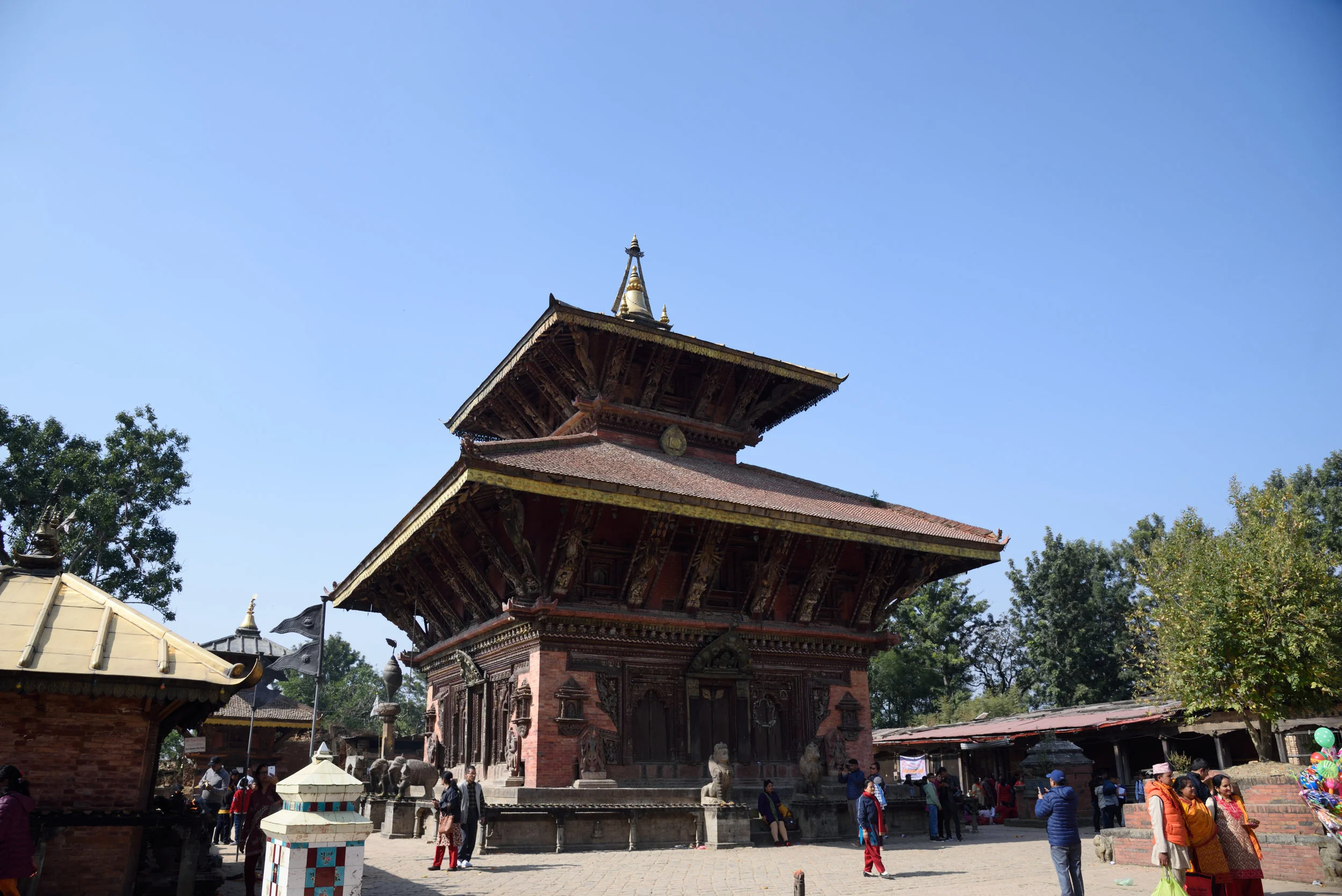When one thinks of a chariot festival in sure you're thinking of the, Indra Jatra, Bisket Jatra or Rato Matysendranth. These festivals are the biggest in each Kingdom of the then Nepal Valley, but one chariot festival when is as historic as the three is not so known of : The Chariot Festival of Aryavalokiteswara Jana Baha Dyo.
Nepal is a country known worldwide for its picturesque mountains, diverse wildlife and abundant natural treasures. There is so much to explore and visit in Nepal but because advertisements have not reached to us, we are unknown about it.
Nepal is a country known worldwide for its picturesque mountains, diverse wildlife and abundant natural treasures. There is so much to explore in Nepal but due to the lack of proper management and and coverage, we are unknown to them.
One of the most historic temples, the temple of Changu Narayan dates back almost 3000 years and is said to have been built during the Lichhavi Era around the 4th Century. Perched on a hill top 4 kilometers north of the city of Bhaktapur, in ancient times the temple was surrounded by a lush champak tree forest and a small village known as Changu. The hill is 12 km east of the capital and the Manohara river flows right beside the hill. The principle shrine is believed to have been established in 325 AD, the temple was reconstructed in 1702 Ad after a devastating fire.
Fagun Purnima also known as Holi is a festival marking the end of winter and coming of spring and summer. Back in the days when phones and the internet didn’t exist, a ling bamboo lingo decorated with clothes of various colors (Chir) is erected a few days before the day of the festival. This tradition is still continued in Basantapur Durbar Square.
Listed in the UNESCO World Heritage Site in 1979 AD, SNP is listed alongside Chitwan National Park. SNP covers a total area of 1,148 Square Kilometers of the Himalayan Ecological zone of the Khumbu region. The upper catchments of Dudhkoshi and Bhotekoshi Rivers which are largely composed of rugged terrain and gorges of the high Himalayas are included in the national park. Ranging in altitude from 2,845m above sea level to 8,848m at the summit of Mount Everest (Sagarmatha), the park has many of the +6000m peaks such as Lhotse, Cho Oyu, Thamserku, Nuptse, Amadablam and Pumori.
Celebrated as the day of Lord Shiva, Maha Shivaratri is one of the most important celebrations for the devotees of Lord Shiva and Hindus around the world. Maha Shivaratri falls on Mid-February or March in the Gregorian calendar. Also known as the Great Night of Lord Shiva, the biggest hub in Nepal during the night is the Pasupati-Nath Temple in Kathmandu.
Legends state on the day, Lord Shiva is said to have saved the world from annihilation. On the condition that from the day forward people worship him with great pride and enthusiasm. Other legends state how the day marks the wedding day of Lord Shiva and Parvati. Believers also know the auspicious night as the night of "Tandava", the primal dance of creation, preservation and destruction. According to Linga Purana , it is believed during Shivaratri Lord Shiva manifested himself into the form of a Linga.
Thousands of devotees, aesthetics, yogi's visit the Pashupati-Nath Temple in Kathmandu, one of the holiest shrine of the Hindus.
"In Satya Yuga, Bipaswi Buddha came from a city known by the name of Bandhumati; and having taken up his abode on the mountain to the west of Nag Hrad(Kathmandu Valley) sowed a lotus-seed in the tank, on the day of the full moon in the month of Chait. The lotus seed that had been sown brought forth a lotus flower, in the middle of which Swayambhu (who had come from Aknisht Bhuban) appeared in the form of light, on the day of the full moon in Aswin." Wright 1877: 77-78
Among the two national parks listed in the UNESCO World Heritage list from Nepal. The Chitwan National Park is a protected area for conservation of the natural habitat, flora and fauna of the subtropical scape of Nepal. The park is home to 68 species of mammals, 544 species of birds, 56 species of herpetofauna(amphibians) and 126 species of fish. The park is home to the One Horned Rhinoceros, Royal Bengal Tiger and Gharial Crocodiles. Through in-situ conservation methods, translocation programs, patrol guarding and monitoring the park has reduced the illegial activities such as poaching, unauthorized deforestation and also increased the social wellbeing of the individuals surrounding the buffer zone.
Losar is one of the main festivals celebrated by the ethnic communities of Tamang, Sherpa, Gurung and Thakali. Losar means new year according to the unisolar calendar followed by the communities, it is also known as the Tibetan Calendar which follows the cycle of 12 years called Lohokor.
Every year during the full moon of Poush Shukla, devotees flock to the holy river of Shali Nadi in Sankhu to offer their prayers to Goddess Swasthani and God Madhav Narayan. Devotees fast for their family’s prosperity till the next full moon. During the month family members read the book of Swasthani.
The youngest of the three sister Durbar’s of the valley. Bhaktapur Durbar Square is a marvel of wooden and stone architecture. It features a unique blend of ingenuity and fusion of the architecture of its older sisters. In comparison with its sister durbars the architectural layout is more organized with large squares and equal divisions around the city. The city diffuses from the centre(Taleju) outwards into the numerous vicinities of Bhaktapur.













